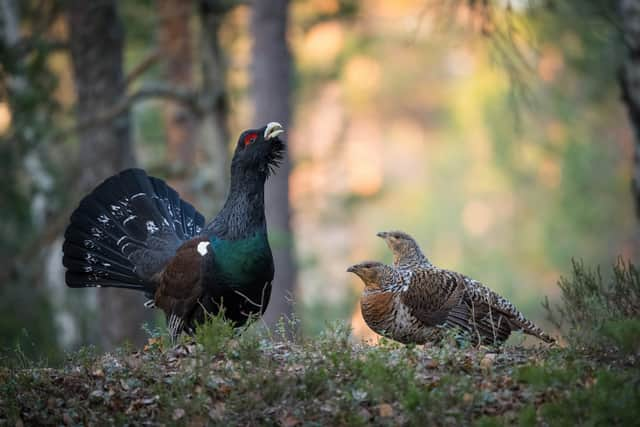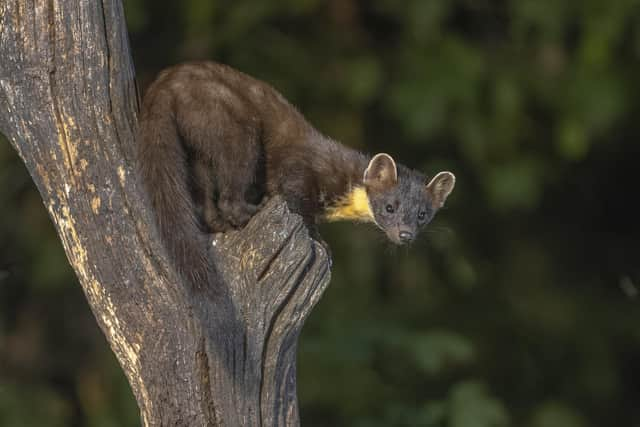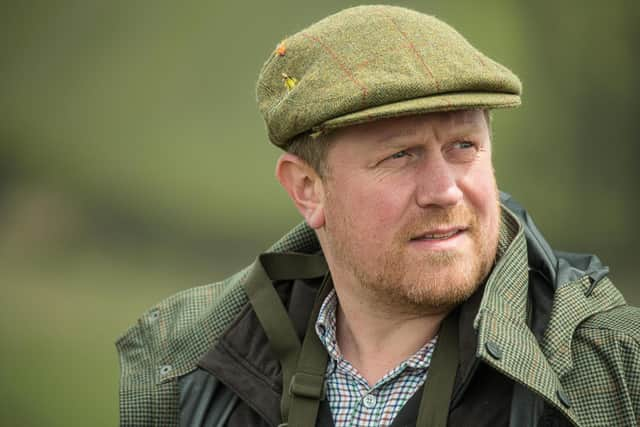Nature groups reach 'political impasse' over how to protect Scotland's fast-declining signature bird: the capercaillie
However, the mammal’s proliferation in its Highland stronghold has led to a threat to another of Scotland's signature animals.
Figures show capercaillie numbers have dropped well below 1,000 for the first time since it disappeared from our forests in the 1800s.
Advertisement
Hide AdAdvertisement
Hide AdNow, scientists are looking at ways to slow down the impact of predation, including baiting techniques, or even considering a contraceptive pill to control pine marten numbers.


While the recovery of one species is welcomed, this situation shows the complexity of achieving a balance with the threat it might pose to the precarious existence of another. But conservation groups have reached “a political impasse” when it comes to protecting Scotland’s capercaillie, said Rory Kennedy, director of Game and Wildlife Conservation Trust (GWCT).
“No one in public sector bodies is willing to step up to the plate and address the thorny issue of predation,” he said.
There’s no dispute that immediate action is required to prevent the ever-decreasing capercaillie population which, according to RSPB figures, has depleted to just 542 in Scotland.
Some experts have predicted the bird could be extinct in the next 20 years.


The idea of pine martens “going on the pill” hit the headlines recently as some wildlife experts speculated about using the contraceptive method to limit numbers in areas where capercaillie nest.GWCT are amongst conservation groups involved in trialling this technique for population control of feral goats, and invasive grey squirrel in England and Wales to protect the native red variety. Squirrel Accord, managing a study on greys, said it’s still in the research phase, with no contraceptives being used in the wider environment, but director Kay Haw said “progress is going really well”.
Some wildlife experts, however, argue pine martens are not invasive, and giving them a “pill” (hidden in nut paste) could damage what is a successful regeneration programme of a species which was nearly extinct.
NatureScot said it “is not actively considering contraception for pine martens” and, while it’s perhaps effective on other species, scaling the technique up for use in the field is “extremely difficult”.
Advertisement
Hide AdAdvertisement
Hide AdOn capercaillie numbers, the government agency said “large-scale and well-managed forest restoration is the key” to revive them.


This is where conflict sets in.
Mr Kennedy points out NatureScot focuses on habitat restoration. But he said the Scientific Advisory Committee (SAC), which is made up of external specialists who give advice to the agency, “clearly stated predation was a critical issue, while habitat was significantly less of a constraining factor”.
He added: “Surely this has to be the consistent message from a government body responsible for this species survival.”
The SAC report, published in February last year, said “there was no evidence that the decline in breeding success of capercaillie… was due to changes in habitat quality.”


On predation, it said: “It is likely that reductions in the numbers of predators would significantly improve the breeding success of capercaillie” with management initiatives aimed at removing predators producing “immediate results”.
The Scottish Gamekeepers Association (SGA) said “the report makes it clear that predation is the key problem to capercaillie numbers”.
SGA said that Cairngorms Connect, a coalition of groups including RSPB and Forestry Commission Scotland, which works on protecting the capercaillie, is not managing predators.
The SAC report, however, did stress that “it is not currently clear whether capercaillie would benefit from the reductions in numbers of just one species”, such as the pine marten.
Advertisement
Hide AdAdvertisement
Hide AdProfessor Neil Metcalfe, an ecologist from the School of Biodiversity at the University of Glasgow, and who was selected as one of the scientists for the SAC, said “the pine marten gets a lot of bad press”.
"They are just an additional predator in a suite of predators including crows, badgers and foxes. What’s changed is they’ve increased in population, but there’s no evidence they have more of an impact on capercaillie than other predators.”
He said reducing disturbance during the breeding season is key.
"You get more predation potentially when there are more people around because if the sitting female who's incubating eggs is disturbed, this allows a crow to come in and take them. If you reduce disturbance, you may also reduce the risk of predator impact.”
He said there is a role for culling foxes and crows because there’s evidence it benefits capercaillie.
But when it comes to pine martens, it becomes politically sensitive.
"They are a fairly rare mammal that has been successfully conserved, so to start culling them seems perverse.”
Instead, professor Metcalfe pointed to an ongoing experiment known as “diversionary feeding” as an alternative way to reduce the impact of predation.
Advertisement
Hide AdAdvertisement
Hide AdXavier Lambin, a professor in ecology at the University of Aberdeen oversees the project designed to deter pine martens from capercaillie areas.
It involves monitoring 720 artificial nests with hens eggs, some with soya wax on to help read teeth marks of different predators.
Results are due to be published shortly, but he said they clearly show using deer carrion as diversionary feeding “substantially reduced predation of artificial nests, translating in a 55 per cent increase in survival”.
The results showed the overall nest predation rate was 51per cent, with 38 per cent being eaten by pine martens (268), 6.9 per cent by badgers and six per cent by other predators. But diversionary feeding “really lowered the impact of the pine marten and the badger”.
Professor Lambin also pointed out the baseline rate of predation is relatively normal in the area for ground nesting birds, so it would be “unfair” to say it is the sole contributor to capercaillie decline.
Some wildlife experts at GWCT, however, questioned the longer term impact of such a solution.
"The issue is it means putting carrion into the woodland environment, and the accepted science and land management best practice is that this can cause a population increase in generalist predators over time,” Mr Kennedy said.
He said some land managers are “cherry picking the findings to satisfy their own ideological positions” as the clock ticks to capercaillie extinction.
Comments
Want to join the conversation? Please or to comment on this article.